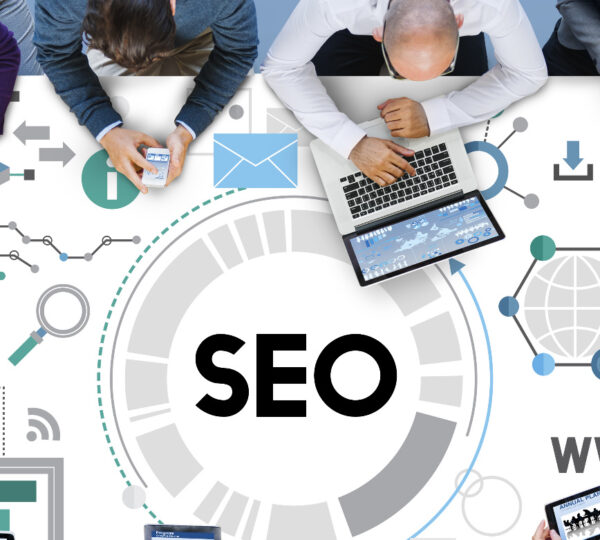Introduction
Search Engine Optimization SEO has undergone a profound transformation in recent years. What began as a process driven by keywords, backlinks, and technical compliance has evolved into a strategy grounded in context, intent, and semantic relationships.
Traditional SEO was primarily about improving rankings by optimizing web pages for search engine algorithms. Today, SEO extends beyond keyword placement it about building a topical ecosystem that aligns with how search engines understand meaning.
This evolution marks the industry shift from optimizing for algorithms to building trust and authority through context and meaning.
Understanding Traditional SEO
Traditional SEO focused on visible on page factors and link acquisition.
Websites were optimized to match specific search queries, often by repeating target keywords across titles, headings, and meta descriptions.
While this approach helped increase visibility, it often ignored user intent and contextual depth. Search engines interpreted content based on literal keyword patterns rather than semantic relationships.
In this model, success was measured by rankings and keyword density, not by how well a website satisfied search intent. Traditional SEO built short term visibility but lacked the structural integrity to maintain long term authority.
The Rise of Semantic and Contextual SEO
Modern SEO focuses on entities, topics, and relationships not just words.
Search engines now interpret content using language models that evaluate context, intent, and relevance.
This change means optimization efforts must reflect how subjects connect and support one another within a larger context.
Every piece of content contributes to the overall knowledge system of a website, forming part of a topical map that establishes depth and trustworthiness.
Rather than viewing pages as isolated, this approach treats them as semantic nodes within a larger network of meaning.
From Keywords to Entities
In traditional SEO, pages were optimized for specific terms such as best SEO tools or SEO tips.
In semantic SEO, the focus shifts toward the entities and relationships behind those terms such as content optimization, data interpretation, and search intent modeling.
By mapping how these entities relate to one another, a brand builds contextual authority.
Each page reinforces the others, and search engines learn to associate the brand with a defined area of expertise.
Entities and their relationships, known as predicates, form the foundation of meaning. For example:
- A brand provides expertise in digital optimization.
- Search engines reward authority built through contextual relevance.
- Content ecosystems enhance trust through semantic depth.
These relationships replace mechanical keyword repetition with meaningful, interconnected knowledge.
Building Topical Authority
Topical authority measures how completely a website covers a specific subject area.
Instead of producing single articles for individual keywords, semantic SEO builds clusters of interrelated content that together define a topic.
Each article or landing page serves a specific purpose within this network. Internal links reinforce these relationships, helping search engines understand that the website provides comprehensive and reliable coverage of its domain.
A strong topical architecture not only improves rankings but also strengthens brand positioning as an expert source of knowledge.
The Role of Human Strategy
While automation can identify trends and relationships, the human role in SEO remains essential.
Strategists and writers act as semantic architects, determining how information should be organized, how topics interconnect, and how intent can best be satisfied.
Human creativity and subject expertise give content its authenticity and relevance, while structured optimization ensures it can be understood by search engines.
This combination of human understanding and semantic structure produces what can be described as meaningful continuity a content ecosystem that consistently aligns with audience expectations and topical relevance.
Measuring Success in Modern SEO
Success in modern SEO is not limited to keyword rankings or raw traffic. It is measured by how effectively a website satisfies intent across an entire topic.
Key indicators include:
- Topical depth how completely the site covers its chosen subject.
- Entity relevance how consistently the site connects related concepts.
- User engagement how well the content aligns with user needs and search purpose.
When a website builds strong semantic relationships, it begins to appear for broader and more complex queries, demonstrating both expertise and reliability.
The Future of SEO
SEO is no longer a race to include the right words; it is a long term process of building contextual authority.
The most successful websites will be those that focus on relationships, meaning, and depth not just visibility.
This transformation reflects a fundamental truth about modern search: algorithms now reward understanding, not optimization tricks.
To lead in this new landscape, brands must think beyond rankings and focus on representing knowledge with precision and purpose.
What is the main difference between traditional SEO and AI-driven SEO?
Traditional SEO focuses on keywords and backlinks, while AI driven SEO focuses on entities, context, and user intent.
Why is context important in modern SEO?
Context helps search engines understand meaning rather than just matching words, improving relevance and ranking accuracy.
How does entity-based optimization improve visibility?
By linking related topics and concepts, entity optimization builds topical authority, making content more trustworthy and discoverable.
What role does user intent play in SEO today?
User intent defines what the searcher wants to achieve aligning content with intent increases engagement and ranking consistency.
How do search engines evaluate content in AI driven SEO?
They analyze semantic relationships, topical depth, and entity connections rather than counting keyword frequency.
What is topical authority?
Topical authority is the level of expertise and trust a website demonstrates across all content within a specific subject area.
Why is internal linking essential in semantic SEO?
Internal links create contextual relationships between pages, helping search engines understand topic hierarchy and relevance.
Can traditional SEO techniques still work?
Yes, but without semantic optimization and entity focus, results are often limited and short lived.
How does machine learning influence SEO?
Machine learning models interpret search intent, user behavior, and content meaning, enabling more accurate and dynamic rankings.
What defines success in AI driven SEO?
Success is measured by semantic coverage, intent satisfaction, and consistent relevance across an entire topical ecosystem.
Conclusion
The difference between traditional and modern SEO lies in the shift from keyword manipulation to contextual understanding.
Optimization is no longer about fitting into a formula it about building an ecosystem of meaning that reflects true expertise.
Websites that invest in semantic structure, topical consistency, and intent alignment will naturally achieve higher visibility and long term authority.
In the future of search, context is the cornerstone of trust, and relevance is the new ranking factor.


